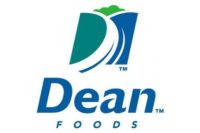Kraft highlights alternative energy initiatives
“This is a time of opportunity for us,” said Steve Yucknut, Kraft’s vice president for sustainability. “Our customers want to do business with partners who support sustainability. Consumers want to buy products from companies that ‘get it’ and employees want to work for companies that respect and preserve the world around them. So, we've increased our focus on sustainability because it's the right thing to do and it makes good business sense.”
As a food and beverage company, Kraft is especially dependent on the ability of the Earth to produce the raw materials used every day to make Kraft products. While sustainability is not new to Kraft, a more focused approach is. “Kraft’s sustainability impact goes across the full supply chain, from farm to fork,” Yucknut said. “That creates a lot of opportunities, but we are choosing to look at six areas where we believe we can have the biggest impact: agriculture, packaging, energy, water, waste and transportation.”
The project showcased at Lowville is one of two waste-to-energy initiatives Kraft has undertaken in
“Whey disposal has long been a challenge,” Yucknut said. “Our facilities have previously used strategies such as concentrating the whey to reduce volume and finding outlets for it to be used as animal feed, or for fertilizer on environmentally approved farm fields. Both methods required transporting the whey offsite. Now, we’re reducing the associated CO2 emissions that are part of transporting waste, discharging cleaner wastewater from our on-site treatment systems, and creating enough alternative energy to heat more than 2,600 homes in the Northeast.”
This project contributes to Kraft’s sustainability goals around energy, energy-related carbon dioxide emissions and waste reduction. The company has set goals to reduce
energy usage by 25 percent, energy-related carbon dioxide emissions by 25 percent and
manufacturing plant waste by 15 percent.
The Lowville digester creates enough biogas to heat about 1,000 homes; the
Kraft’s Lowville plant, which makes
Looking for a reprint of this article?
From high-res PDFs to custom plaques, order your copy today!




